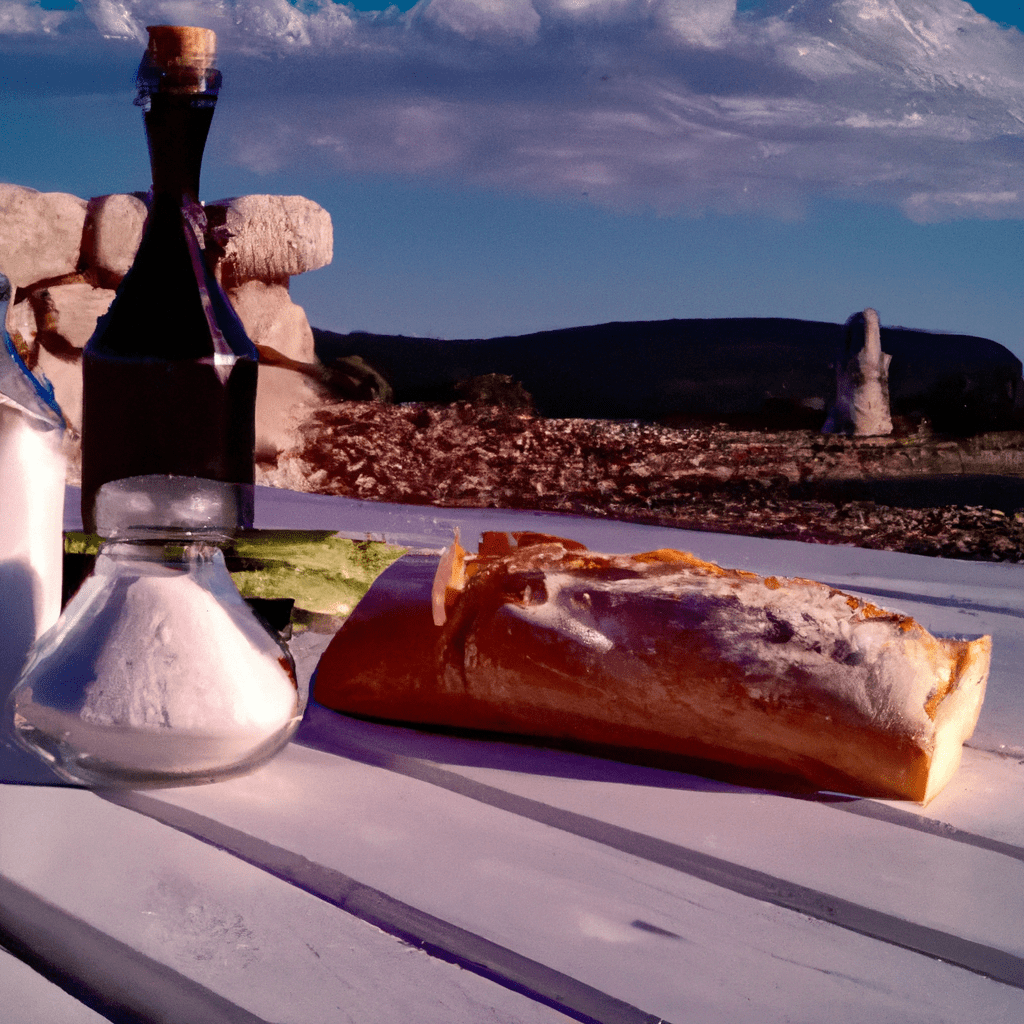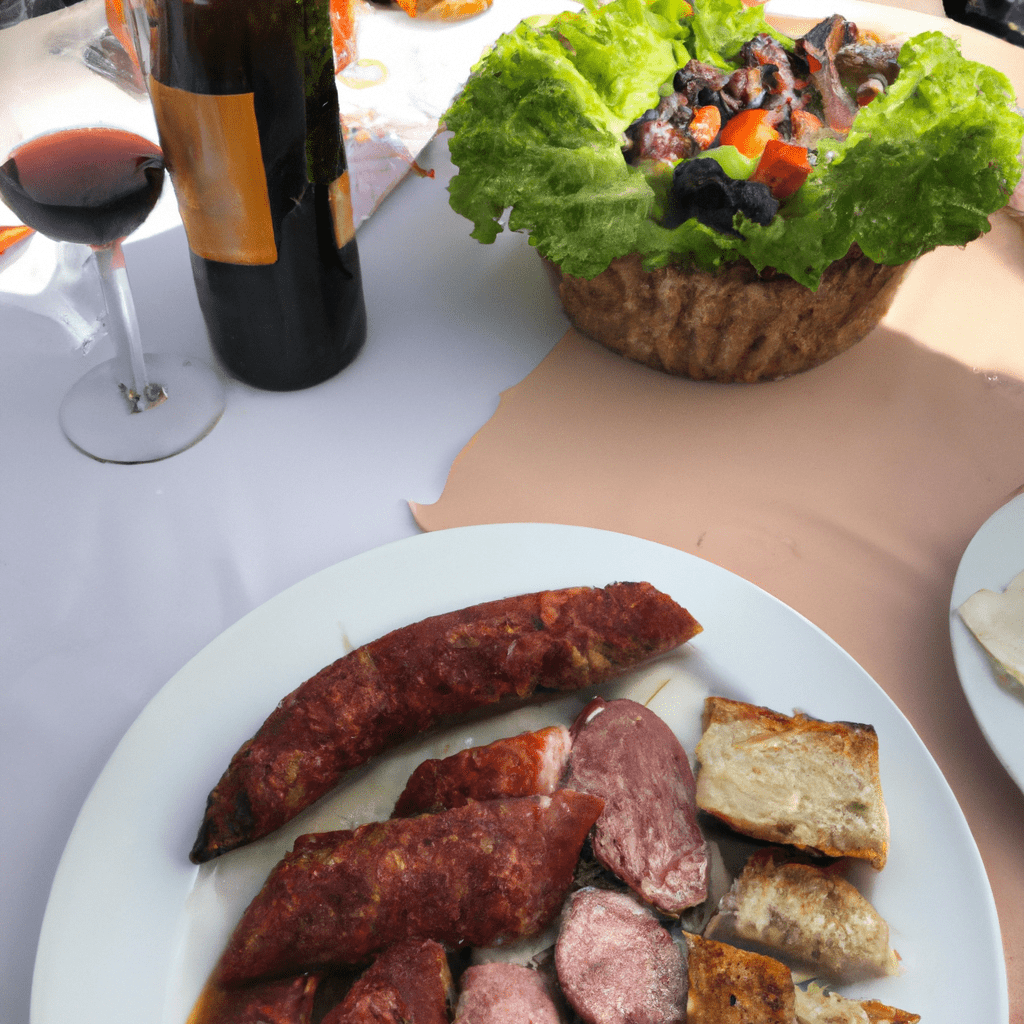The Role of Local Ingredients in Dalmatian Cooking
The Dalmatian coast of Croatia is renowned for its stunning scenery, vibrant culture, and delicious cuisine. The region’s cuisine is a unique blend of Mediterranean flavors, with a focus on fresh, local ingredients. From the seafood-rich Adriatic Sea to the fertile fields of the hinterland, Dalmatian cooking is a celebration of the region’s abundance.

Local ingredients are the foundation of Dalmatian cooking. The Adriatic Sea provides a bounty of seafood, including anchovies, sardines, and squid. The region’s olive groves produce some of the world’s finest extra-virgin olive oil. The hinterland is home to a variety of vegetables, including tomatoes, peppers, and eggplant. Herbs such as rosemary, oregano, and sage are also widely used.
The use of local ingredients in Dalmatian cooking is more than just a matter of convenience. It is a way of honoring the region’s history and culture. The flavors of the Adriatic Sea, the olive groves, and the hinterland have been part of the region’s culinary heritage for centuries. By using local ingredients, Dalmatian cooks are able to create dishes that are both delicious and deeply rooted in the region’s history.
The use of local ingredients also allows Dalmatian cooks to create dishes that are both healthy and flavorful. The abundance of fresh seafood, vegetables, and herbs provides a wealth of nutritious options. By combining these ingredients in creative ways, Dalmatian cooks are able to create dishes that are both healthy and delicious.
Traditional Dalmatian Recipes Passed Down Through Generations

The Dalmatian coast of Croatia is renowned for its stunning beauty, but it is also home to a rich culinary tradition that has been passed down through generations. From the fresh seafood of the Adriatic Sea to the hearty stews of the mainland, Dalmatian cuisine is a unique blend of flavors and ingredients that have been perfected over centuries.
One of the most iconic dishes of Dalmatian cuisine is the classic “brodet”, a fish stew made with a variety of fresh seafood and vegetables. This dish is typically served with a side of polenta or potatoes, and is a favorite among locals and visitors alike. Another popular dish is “peka”, a slow-cooked meat and vegetable stew that is cooked in a sealed clay pot over an open fire. This dish is often served with a side of bread and is a great way to enjoy the flavors of the region.
For those looking for something a bit lighter, Dalmatian cuisine also offers a variety of salads and appetizers. The “salata od hobotnice” is a traditional octopus salad that is often served with a side of olives and feta cheese. The “prsut” is a cured ham that is served with a variety of cheeses and vegetables, and is a great way to start any meal.
Dalmatian cuisine is also known for its desserts. The “fritule” are small fried dough balls that are often served with a side of jam or honey. The “rozata” is a custard-like dessert that is flavored with rosewater and topped with a layer of caramelized sugar.
The traditional recipes of Dalmatian cuisine have been passed down through generations, and are still enjoyed by locals and visitors alike. From the hearty stews of the mainland to the light and flavorful salads of the coast, Dalmatian cuisine is a unique blend of flavors and ingredients that have been perfected over centuries. Whether you’re looking for a light snack or a full-course meal, Dalmatian cuisine has something for everyone.
The Influence of Mediterranean Cuisine on Dalmatian Dishes
The Mediterranean cuisine has had a profound influence on Dalmatian dishes, and it is easy to see why. The region of Dalmatia, located on the eastern coast of the Adriatic Sea, has been a crossroads of cultures for centuries. This has resulted in a unique culinary tradition that is a blend of Italian, Greek, and Slavic influences.
The Mediterranean diet is renowned for its health benefits, and this is reflected in the Dalmatian cuisine. The region is known for its abundance of fresh seafood, vegetables, and herbs, all of which are staples of the Mediterranean diet. This is combined with the use of olive oil, which is a key ingredient in many Dalmatian dishes. The combination of these ingredients creates a flavorful and nutritious cuisine that is both delicious and healthy.
The Mediterranean diet also emphasizes the use of spices, which are used to enhance the flavor of the dishes. This is evident in the Dalmatian cuisine, which features a variety of spices such as garlic, oregano, and paprika. These spices add a unique flavor to the dishes, making them even more enjoyable.
The Mediterranean diet also encourages the use of seasonal ingredients, which is something that is reflected in the Dalmatian cuisine. The region is known for its abundance of fresh fruits and vegetables, which are used to create a variety of dishes. This ensures that the dishes are always fresh and flavorful.
Finally, the Mediterranean diet emphasizes the importance of socializing and sharing meals with family and friends. This is something that is reflected in the Dalmatian cuisine, which is often served in large family-style meals. This encourages people to come together and enjoy the food, creating a sense of community and camaraderie.
The influence of the Mediterranean cuisine on Dalmatian dishes is undeniable. The combination of fresh ingredients, spices, and socializing has created a unique and flavorful cuisine that is both nutritious and enjoyable. It is no wonder that the Dalmatian cuisine has become so popular around the world.
Exploring the Rich History of Dalmatian Cuisine

Dalmatian cuisine is a unique and flavorful blend of Mediterranean and Central European influences. From the coastal towns of Croatia to the inland villages of Bosnia and Herzegovina, the region has a rich culinary history that has been shaped by centuries of cultural exchange.
The cuisine of Dalmatia is characterized by its use of fresh, local ingredients. Fish, seafood, and vegetables are staples of the region’s diet, and the cuisine is known for its use of olive oil, garlic, and herbs. Dishes such as crni rižot (black risotto), pašticada (beef stew), and peka (meat and vegetables cooked in a sealed pot) are just a few of the traditional dishes that are still enjoyed today.
The region’s unique climate and geography have also played a role in shaping its cuisine. The mild climate and abundance of fresh produce make it ideal for growing a variety of fruits and vegetables, while the rugged coastline provides access to a variety of seafood. This combination of ingredients has resulted in a cuisine that is both flavorful and nutritious.
Dalmatian cuisine is also known for its use of spices and herbs. Paprika, oregano, and bay leaves are commonly used to add flavor to dishes, while garlic and onions are used to add depth and complexity. The region’s unique climate also allows for the cultivation of a variety of herbs, such as rosemary, thyme, and sage, which are used to add flavor to dishes.
The history of Dalmatian cuisine is as rich and varied as the region itself. From the ancient Greeks to the Venetians, the region has been influenced by a variety of cultures, each of which has left its mark on the cuisine. This rich history has resulted in a cuisine that is both flavorful and nutritious, and one that is sure to delight the palate.
By Natalie
A free member of the Food Culrure Community
Visits to this blog post: [wpstatistics stat=postcount time=total]

